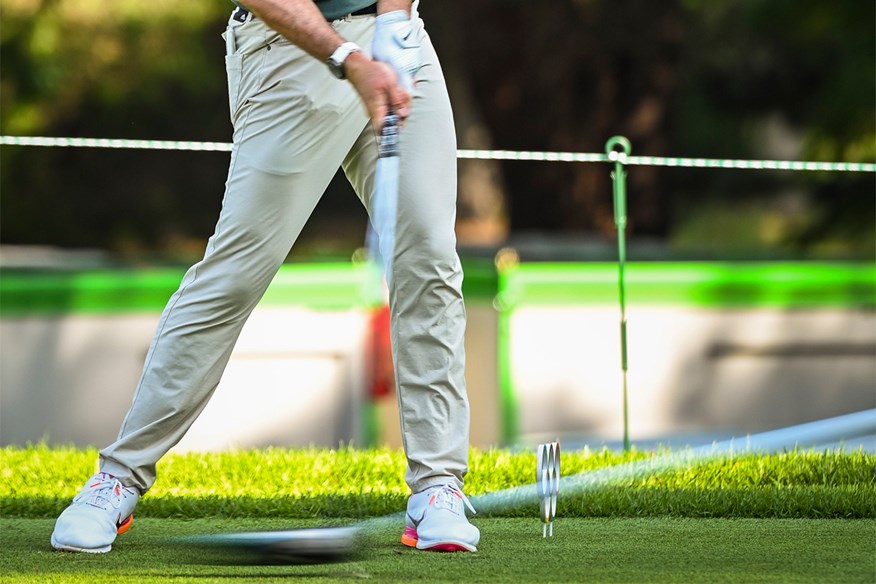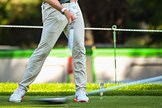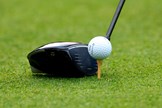Hit it further without swinging harder – the 2025 drivers with the best smash factor
Last updated:
We reveal the 2025 drivers that turned swing speed into maximum ball speed in our test.
Every golfer would like to hit their driver further.
Hitting big drives is one of the most satisfying things in golf, and extra yards are good for more than just your ego.
“Distance is far more of an indicator of success than accuracy,” says Sean Foley, who has coached Tiger Woods, Lee Westwood, and Justin Rose, among others.
He’s right. The straightest drivers on tour lag well behind the longest hitters when it comes to tour wins and earnings.
And the importance of distance isn’t limited to tour pros. Every piece of data on the subject shows a correlation between longer driving distance and lower scores.
So, how do you increase your driving distance?
The biggest thing that determines your driving distance is ball speed. And there are two key ways to boost that: increase your swing speed, or get more from the speed you already have.
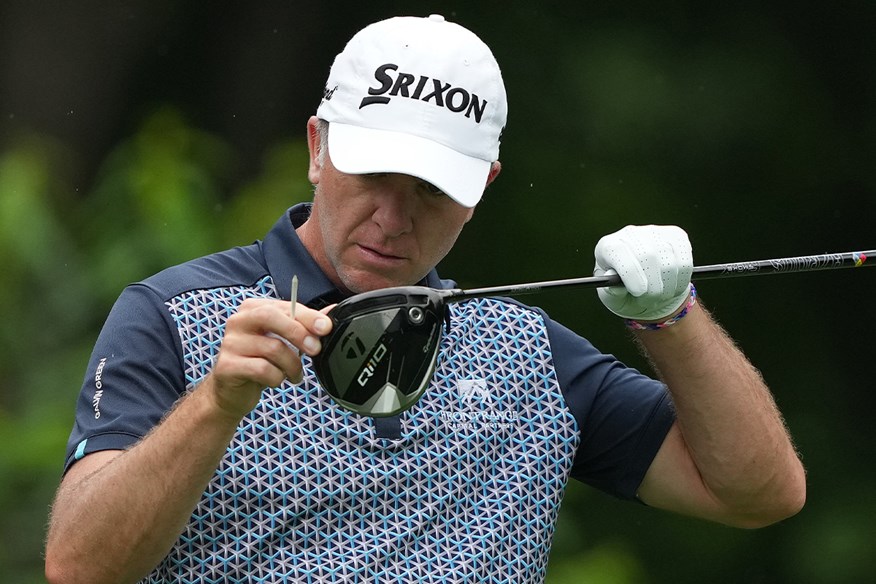
The two ways you can hit longer drives
There are two routes to faster ball speed and therefore longer drives:
1. Bring more speed to the table
A higher clubhead speed increases your potential distance. You don’t need to be Einstein to realize that a golf ball hit with a driver swinging at 130mph is likely to go further than a ball hit by a driver traveling at 80mph.
Unfortunately, increasing your swing speed isn’t easy. You may need to increase strength, flexibility, and swing mechanics. You could try a specific swing speed training system, like The Stack or SuperSpeed Golf. With enough consistency, over a long enough period, you may be able to add some swing speed.
But the improvements tend to be small and come slowly. Thankfully, the other route is a quicker instant fix.
2. Get the most from your current swing speed
Increasing swing speed is one thing, but most golfers aren’t even getting the most out of the speed they’re already generating.
So how do you know if you are? And how do you fix it if you’re not?
It all comes down to smash factor.

What is smash factor?
Smash factor is a simple but powerful measure of how efficiently you transfer energy from the club into the golf ball. It’s calculated by dividing ball speed by clubhead speed.
For example, if your driver swing speed is 100mph and your ball speed is 150mph, your smash factor is 1.50 – which is considered optimal for most golfers.
Why 1.50? That’s the maximum you can realistically achieve under the rules of golf with modern equipment, because the “spring-like” effect of the clubface is limited by the USGA and R&A.
If your smash factor is lower, it means some of your potential ball speed is being lost, usually because of:
- Off-center strikes (missing the sweet spot)
- Poor launch conditions (wrong tee height, ball position, or swing path)
- Mismatched equipment (loft, shaft, or driver head that doesn’t suit your swing)
The good news? Improving your smash factor can give you instant extra yards without having to swing harder – you’re simply getting more out of the speed you already have.
How to increase your smash factor
1. Hit the ball out of the center
Sounds obvious, but it’s amazing how many golfers leak ball speed simply by missing the sweet spot. Shots struck from the toe, heel, or low on the face lose efficiency instantly.
Work on your strike pattern – foot spray or impact tape can show exactly where you’re making contact. A small improvement here can make a massive difference.
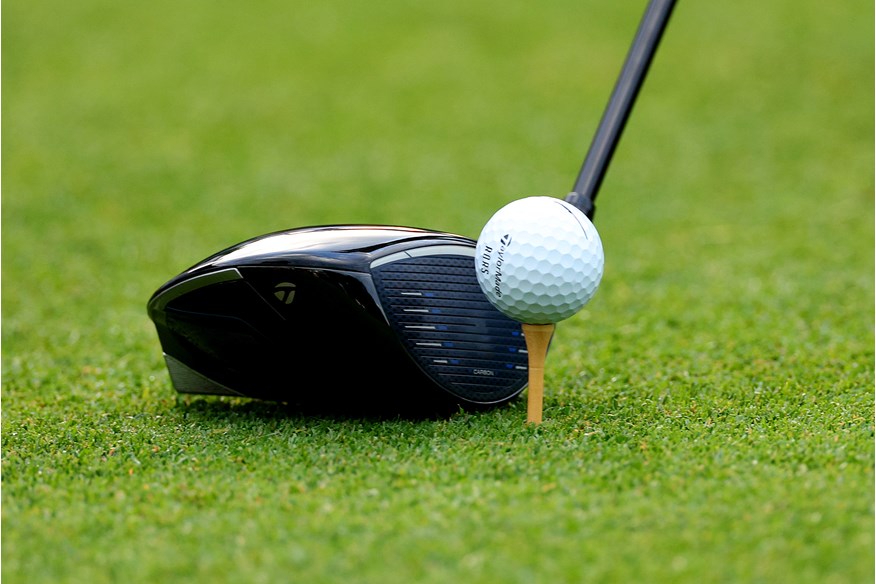
2. Tee it at the right height
Too low and you risk hitting down on the ball, robbing you of both ball speed and launch. Too high and you may catch it high on the face, which kills spin but can also drop your smash factor.
Generally, having half the ball above the crown of the driver at address is a great starting point.
And you could always copy the secret teeing trick tour pros use for better drives.
3. Optimize your launch and spin
Even with perfect strike location, you can be losing yards if your launch and spin numbers aren’t right. Many golfers spin the ball too much with the driver, costing both distance and control. A custom fitting can help you find a loft and shaft combination that launches the ball high enough but with the right spin to keep it in the air without ballooning.
4. Play the right type of driver
Modern drivers vary a lot in how forgiving they are and how much ball speed they preserve on off-center hits. Some deliver excellent smash factor even when your strike is far from perfect.
Which brings us on to…
Drivers with the highest smash factor
In our 2025 test, certain drivers consistently delivered the highest smash factor numbers for our tester. That means they converted his clubhead speed into ball speed more efficiently – the holy grail for golfers wanting to get the most from their speed.
| Make | Model | Club Speed (mph) | Ball Speed (mph) | Smash factor | Carry Distance (yds) | Spin Rate (rpm) |
|---|---|---|---|---|---|---|
| PXG | Black Ops Tour (forward) | 112.5 | 164.5 | 1.462222222 | 286.2 | 2204 |
| PXG | Black Ops (back) | 113.2 | 162.5 | 1.435512367 | 278 | 2696 |
| PXG | Black Ops (forward) | 113.7 | 163.1 | 1.434476693 | 280.1 | 2610 |
| Wilson | Dynapwr Carbon (back) | 115.6 | 165.3 | 1.429930796 | 284.8 | 2682 |
| Ping | G440 LST | 115.6 | 164.7 | 1.424740484 | 289.8 | 2502 |
| PXG | Black Ops Tour (back) | 114.8 | 162.9 | 1.418989547 | 286.4 | 2126 |
| Wilson | Dynapwr Max | 113.9 | 161.5 | 1.417910448 | 273.2 | 2887 |
| Ping | G440 Max | 115.1 | 163.1 | 1.417028671 | 281.8 | 2702 |
| Callaway | Elyte Triple Diamond (forward) | 116.5 | 165 | 1.416309013 | 290.8 | 2202 |
| Titleist | GT4 (forward) | 116.6 | 165.1 | 1.415951973 | 292.4 | 2274 |
| Wilson | Dynapwr LS (forward) | 114.6 | 162.2 | 1.415357766 | 286.4 | 2228 |
| Callaway | Elyte Triple Diamond (back) | 116.1 | 164.2 | 1.414298019 | 286.2 | 2516 |
| Callaway | Elyte X | 116 | 163.9 | 1.412931034 | 282.2 | 2585 |
| Titleist | GT3 | 117.3 | 165.7 | 1.412617221 | 292.8 | 2378 |
| Titleist | GT2 | 115.5 | 163.1 | 1.412121212 | 280.4 | 2728 |
| Wilson | Dynapwr Carbon (forward) | 117 | 165.2 | 1.411965812 | 289.9 | 2442 |
| Cleveland | HiBore XL | 113.6 | 160.3 | 1.411091549 | 277.9 | 2561 |
| Mizuno | ST-Max | 115.1 | 162.4 | 1.410947003 | 281.7 | 2519 |
| TaylorMade | Qi35 LS (back) | 117.4 | 165.6 | 1.410562181 | 284.6 | 2715 |
| Wilson | Dynapwr LS (back) | 114.6 | 161.6 | 1.410122164 | 282.1 | 2408 |
| Callaway | Elyte Core | 117.3 | 165.3 | 1.409207161 | 283.3 | 2692 |
| Cobra | DarkSpeed LS (back) | 117.4 | 165.2 | 1.407155026 | 284.2 | 2778 |
| TaylorMade | Qi35 Core (forward) | 116.1 | 163 | 1.403962102 | 283.7 | 2284 |
| TaylorMade | Qi35 Max | 115.8 | 162.3 | 1.401554404 | 275.4 | 2825 |
| Cobra | Max K | 114.6 | 160.6 | 1.401396161 | 276.1 | 2646 |
| TaylorMade | Qi35 Core (back) | 115.9 | 162.4 | 1.401207938 | 275.8 | 2856 |
| Srixon | ZXi LS (forward) | 117.6 | 164.4 | 1.397959184 | 289.4 | 2365 |
| Srixon | ZXi Core | 115.3 | 161.1 | 1.397224631 | 275.4 | 2822 |
| Ping | G440 SFT | 115.9 | 161.8 | 1.396031061 | 275.3 | 2859 |
| Cobra | DarkSpeed LS (forward) | 117.9 | 164.4 | 1.394402036 | 287.1 | 2504 |
| Titleist | GT4 (back) | 117.2 | 163.1 | 1.391638225 | 277.7 | 2876 |
| Srixon | ZXi LS (back) | 116.4 | 161.8 | 1.390034364 | 282.6 | 2337 |
| Cobra | Max D | 117.7 | 163.3 | 1.387425658 | 276.1 | 2963 |
| Cobra | DarkSpeed X (forward) | 116.2 | 161.1 | 1.386402754 | 281.4 | 2443 |
| Cobra | DarkSpeed X (back) | 116.7 | 161.4 | 1.383033419 | 276.8 | 2777 |
But it’s important to remember…
Just because these drivers delivered the highest smash factor for our test pro doesn’t mean they’ll automatically be best for you.
And the highest smash factor doesn’t necessarily mean maximum distance. As the table shows, whilst the PXG Black Ops driver produced the highest smash factor, it wasn’t the longest driver on test. The reason? The clubhead speed with the Black Ops was the slowest on test. That could be an aerodynamics issue, or simply that our tester felt more confident with other drivers and therefore subconsciously swung them faster.
Still, a driver that gets the most out of what you put in is worth considering.
And the most important thing? If you’re testing drivers yourself, keep a close eye on smash factor. If it’s down, you’re leaving yards in the bag – and that’s something no golfer wants.
Find a driver that helps you generate maximum clubhead speed and smash factor – then you’re onto a winner.
How we tested the drivers
Our test pro hit balls with each driver until we had six good shots, while we tracked every piece of data on a GC Quad launch monitor. Any drives that our test pro felt weren’t a fair representation of the club – severe mishits, etc – were discarded and replaced with another shot. Thanks to our test pro’s remarkable consistency, this was a very rare occurrence!
The test lab
The test was conducted under strict conditions, overseen by a former Team GB bio-mechanist, at an indoor facility. We chose to test indoors to eliminate the influence of wind or temperature changes.
Our test pro
Our test pro, Neil Wain, is a very consistent golfer, having played for England as an amateur before turning pro off a +4 handicap. He’s a highly regarded player, coach, and custom fitter.
Shaft
All of the drivers were tested using the same shaft, which eliminates a variable and helps us compare the performance of the driver heads.
Model: Fujikura Ventus VeloCore+
Profile: Blue
Weight: 60g
Flex: X-Stiff
Length: 45” (to end of shaft)
Grip: Golf Pride Tour Velvet .60R (1 Layer of Tape)
Loft
We tested all the driver heads in a 10.5º loft (Titleist being the exception at 10º, as they do not produce a 10.5º head) with standard hosel/sleeve settings so we could compare them like-for-like. Drivers with front-back adjustable weight options were tested in both forward and rearward weight configurations.
The golf ball
To get the best and most reliable data possible, we always insist on using a premium golf ball.
Over the last few years we’ve used several of the best golf balls to conduct our testing, including the Callaway Chrome Tour, Bridgestone Tour-B, and Titleist Pro V1. This year we used the TaylorMade TP5.
The TP5 offers consistency and performance that is up to the standards of numerous tour pros, including Rory McIlroy and Tommy Fleetwood, and has won many Majors.
